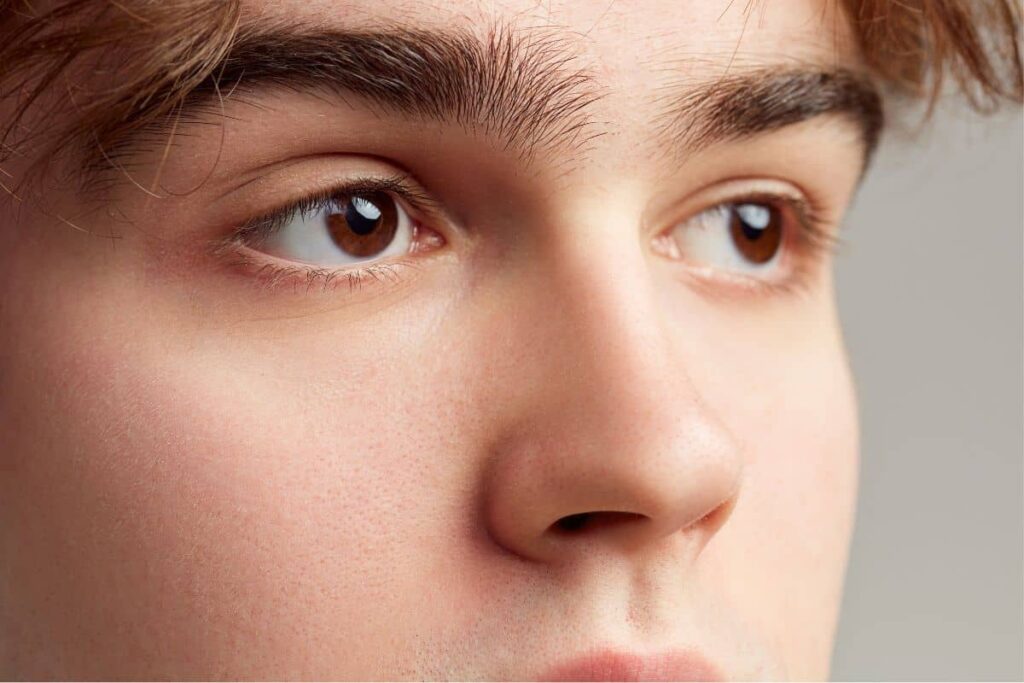Can Rhinoplasty Fix My Cleft Nasal Deformity?
Posted by Dr. Alisa Yamasaki

Cleft nasal deformities are more than just cosmetic concerns; they often arise in patients with a history of cleft lip and palate. When the shape and symmetry of the nose are disrupted, it can affect nasal breathing, facial balance, and self-esteem. The great news is that rhinoplasty can address these issues. By restoring nasal shape, function, and aesthetics, cleft rhinoplasty can help you breathe easier and feel more confident about your appearance.
Find a Solution for Your Cleft Nasal Deformity
- Cleft nasal deformity involves structural and cosmetic imbalances in the nose that stem from cleft lip or cleft palate.
- Secondary cleft rhinoplasty can improve nasal breathing, nasal symmetry, and overall facial profile.
- This surgical procedure often involves reshaping cartilage and correcting the nasal tip to achieve balanced nostrils and improved nasal function.
- Both unilateral cleft lip nasal and bilateral cleft lip nasal deformities can benefit from personalized treatment plans.
- Dr. Alisa Yamasaki, a facial plastic and reconstructive surgeon, performs transformational cleft rhinoplasty surgeries in New Jersey and Philadelphia.
What Is Cleft Nasal Deformity?
Cleft nasal deformity is a condition that occurs in individuals born with a cleft lip or palate, affecting the shape and structure of the nose. This deformity typically results in asymmetry, where the nose may appear crooked, flattened, or misaligned.
Causes of cleft nasal deformity
Cleft nasal deformities stem from irregularities in nasal development related to congenital cleft lip and cleft palate. Below are some common causes:
- Incomplete fusion of facial structures during fetal development
- Displacement or underdevelopment of nasal cartilage
- Persistent structural imbalances following cleft lip repair
- Previous surgeries that altered nasal support
Each factor can contribute to nasal asymmetry and compromised airway function. By understanding these causes, patients and surgeons can develop tailored treatment plans.
Impact of Cleft Nasal Deformity
A cleft nose affects more than just appearance; it can influence function and emotional well-being. Consider the following issues:
- Compromised nasal breathing due to a deviated septum or narrowed passages
- Altered nasal shape that disrupts overall facial harmony
- Negative self-image and emotional distress stemming from perceived facial imbalance
- Difficulty with certain oral functions due to altered lip and nose structure
Patients experiencing these struggles can better appreciate the comprehensive benefits of a properly planned rhinoplasty.
Improved breathing, confidence, and comfort are just one appointment away
Schedule with Dr. Yamasaki in New Jersey or Philadelphia!
How Rhinoplasty Can Help Address Cleft Nasal Deformity
While traditional rhinoplasty typically focuses on cosmetic enhancements, cleft rhinoplasty is a specialized reconstructive surgery. It aims to restore both the appearance and function of the nose, ensuring the nostrils, upper lip, and overall facial structure align harmoniously for more balanced and natural results.

Consider these potential benefits:
- Enhanced nasal breathing, leading to better overall comfort and sleep quality
- Improved facial symmetry, restoring a balanced facial profile and appearance
- More refined nasal tip and nostril shape for harmonious integration with the upper lip
- Correction of structural defects to promote long-term stability and comfort
With these advantages, patients often experience a renewed sense of confidence and improved quality of life following cleft rhinoplasty.
Why Choose Dr. Alisa Yamasaki?
Selecting the right surgeon is crucial for achieving optimal results. Benefits of partnering with Dr. Yamasaki include:
- Board-certified in otolaryngology and fellowship-trained in facial plastic and reconstructive surgery
- Extensive experience with many procedures, ranging from lip lifts to reconstructive surgeries.
- Personalized treatment plans tailored to each patient’s unique nasal shape, history of cleft lip, and functional needs
- Advanced techniques from a Harvard-trained rhinoplasty surgeon with an academic background and nearly 50 publications
With the Yamasaki Facial Plastic Surgery team, patients receive the highest standard of care and results they can trust.
The Cleft Rhinoplasty Procedure
Undergoing cleft rhinoplasty involves several steps to ensure the best outcome. Key phases include:
- Comprehensive consultation to discuss history, goals, and potential surgical approaches
- Pre-surgical planning to address unique structural challenges and previous surgeries
- Precise surgical procedure using open rhinoplasty techniques to reshape cartilage and correct the nasal septum
- Adherence to post-operative care instructions, including instructions to minimize swelling, protect the nose, and promote proper healing
Together, these steps create a pathway to improved nasal function and a more balanced facial appearance.
Learn more about the rhinoplasty process tailored just for you
Contact Dr. Alisa Yamasaki today to discuss your personalized treatment plan!
Why Undergo Cleft Rhinoplasty Now?
Addressing cleft nasal deformities can yield transformative, lasting benefits when done at an appropriate age—often after facial growth has stabilized. Consider the following reasons:
- Improved nasal function and breathing earlier in life.
- Enhanced self-confidence during formative years.
- Reduced need for more extensive surgical revisions later on.
- Smoother integration with other facial features as they mature.
By timing the procedure wisely, patients can achieve optimal, stable results and a lifetime of improved well-being. Contact Dr. Yamasaki today to learn more about cleft rhinoplasty and if it is right for you.
Consult with an Expert in New Jersey and Philadelphia
Ready to learn more about restoring your nasal shape, function, and confidence? Dr. Alisa Yamasaki provides personalized, expert guidance in both New Jersey and Philadelphia. During your appointment, she’ll review your unique history, recommend the ideal treatment, and offer a compassionate, professional approach. Schedule a consultation today to take the first step toward a more harmonious and functional facial appearance.
Yamasaki Facial Plastic Surgery is located at 256 Bunn Dr, Suite A, Princeton, NJ. To schedule a consultation with Dr. Yamasaki, call our office at 609-874-7199. Additional offices include:
- 719 US-206, Suite 101, Hillsborough, NJ; Phone number: (908) 952-0001
- 111 Floral Vale Blvd, Suite A, Yardley, PA; Phone number: (267) 399-4970
FAQs About Cleft Rhinoplasty Surgery
Most patients begin to notice improvements within a few weeks, but residual swelling may persist for several months. Generally, you can resume light activities within two weeks and return to most normal routines by six weeks. Complete healing and final results often take up to a year.
Cleft rhinoplasty is typically performed once facial growth is complete, often around the mid-to-late teenage years. This ensures the nasal structures have matured, reducing the risk of altered results over time. However, the appropriate age can vary based on individual development and specific surgeon recommendations.
Cleft rhinoplasty surgery typically lasts a few hours, depending on how extensive the reconstruction is. General anesthesia ensures you remain comfortable and pain-free during the procedure. Post-operatively, patients may experience mild discomfort, which is usually managed with prescribed medications and cold compresses, ensuring a more comfortable recovery.
As with any surgery, there are potential risks, such as bleeding, infection, and scarring. However, working with a skilled and experienced plastic surgeon significantly reduces these complications. Your surgeon will thoroughly review all potential risks, provide instructions to minimize complications, and ensure a safe and successful outcome.